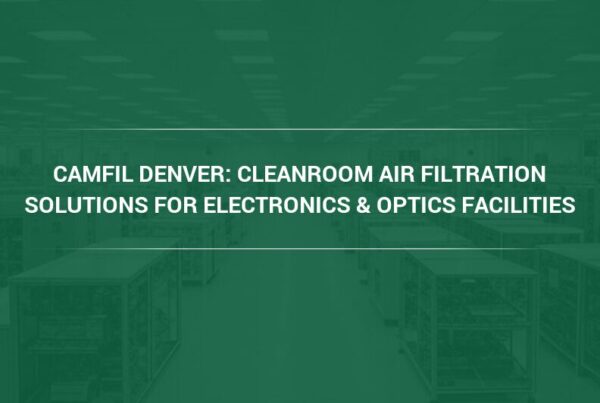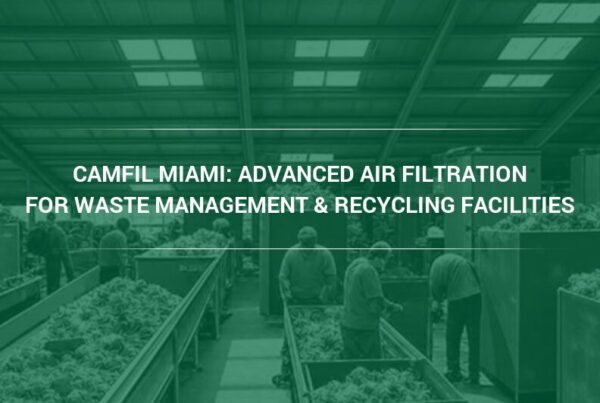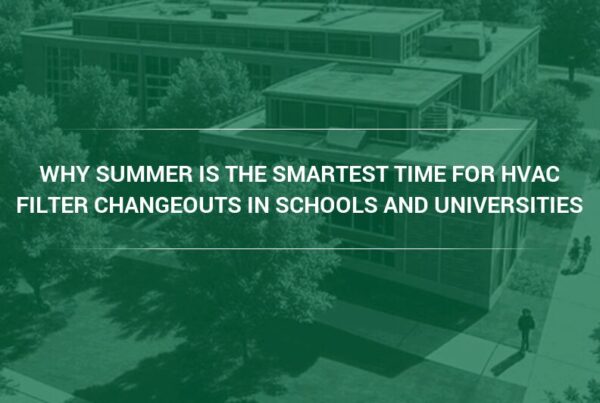Maintaining optimal indoor air quality is essential for the health and well-being of occupants in commercial office buildings. Air filters play a critical role in this process by trapping dust, pollen, and other airborne particles. The importance of changing these air filters at the right time cannot be overstated, as it affects not only the air quality but also the efficiency and longevity of the HVAC system.
Why Change Filters on Time?
Changing air filters on time is pivotal for several compelling reasons related to filter efficiency and operational costs:
- Maintaining Good Air Quality. Air filters cannot perform effectively if they are already full of dust and debris. Unfiltered air will bypass around the filter and leave the building’s occupants unprotected.
- Energy Efficiency. A clogged or dirty air filter increases the resistance to airflow (pressure drop) and causes the fan to speed up in order to maintain airflow. This leads to higher energy usage. Timely filter changes ensure that the system operates at peak efficiency, keeping energy costs low.
- Return on Investment. Maximizing the use of a filter for the price paid is important. Filters should remain in the system as long as they are removing particles from the air while flowing the proper amount of clean air into the space. This ensures a good return on investment.
- System Protection. Overused filters can create bypass situations where unfiltered air finds its way around the filter and into the space. Worse, the filter can completely collapse under the strain and be sucked into the coils or fan, potentially causing expensive damage to the HVAC system. When serious damage to the HVAC system occurs, building shutdowns are sometimes warranted during repairs, further raising the overall cost of such damage. Determining the optimum changeout time prevents such issues.
- Labor Reallocation. Optimizing the filter change schedule allows for flexibility to schedule changes during milder temperatures and weather conditions. Quarterly changes, when done for no valid reason, force work to be done in the coldest months with dangerous snow and ice present or during the challenges from the high temperatures of summer. Optimizing changeout schedules also allows the facility to reallocate these unnecessary labor hours to other far more valuable tasks.
WATCH: How To Properly Procure Air Filters | Camfil USA
Common Contaminants in Office Environments
Office environments are susceptible to various unexpected air pollutants, such as:
- Chemical residue from cleaning. Cleaning chemicals, such as bleach, can significantly contribute to indoor air pollution in indoor spaces. Air fresheners also worsen air quality in confined areas with poor ventilation.
- Outdoor sources. Outdoor pollution can seep into buildings and get trapped due to inadequate ventilation. This is common in areas with high pollution levels, like near busy roads or in polluted cities. Pollutants enter indoors through doors, windows, and even on people’s clothes.
- Printers, copier machines, and other office equipment. Large ink-consuming machines or equipment can emit significant volatile organic compounds (VOCs). Additionally, shredder machines and other office equipment are significant sources of paper dust.
- Shared occupancy spaces. Office buildings often lease space to reduce costs. Some tenants handle chemicals like paint, polluting the air and affecting occupants’ health. Insufficient air filtration and ventilation can pose a significant health risk to everyone in the building.
- Furniture and furnishings. New furniture often releases volatile organic compounds (VOCs) like formaldehyde into indoor spaces, a common occurrence. This is particularly prevalent with inexpensive or mass-produced furniture.
- Building inhabitants. Office workers can introduce indoor pollutants such as pollen, dust, pet dander, and other particles on their clothing. Additionally, humans shed about 40,000 skin cells per minute, leading to dust buildup throughout the day. Breathing adds moisture to the air, which if not controlled, can create discomfort and promote mold and mildew growth.
Determining the Optimal Changing Point
One method to determine the optimal time to change a filter is to use a differential pressure gauge to measure the pressure drop — the difference in airflow pressure on either side of the filter. Generally, when the initial pressure drop has doubled, this is a reliable indication that it’s time for a filter changeout in a commercial HVAC system. Once this point has been reached, the high energy usage caused by airflow resistance will cost significantly more than labor and purchasing costs for changing the air filter.
Cheap panel filters with high initial pressure drops often become ineffective and need to be replaced more frequently than the standard three-month change schedule, while high-quality panel filters can maintain rated efficiency while maintaining a low-pressure drop, therefore protecting the health of building occupants and the integrity of HVAC and other sensitive equipment for up to a year.
Ultimately, the appropriate air filter changeout schedule for a commercial building will vary widely depending on specifics such as air pollution concentrations and filter quality. Consult an HVAC specialist for assistance in determining an optimal filter changeout schedule.
Camfil’s Resources and Expert Advice
Camfil provides a wealth of resources on filtration principles, industry-specific solutions, and practical tips for filter maintenance. Their expertise can guide building managers in maintaining healthy indoor air quality and efficient HVAC system operation.
Find case studies, tips from industry experts, and more at: www.camfil.us
Final Takeaway
Selecting the optimal time for air filter changes is crucial for maintaining healthy indoor air quality and cost-efficient HVAC system operation in commercial office buildings. By adhering to expert advice and best practices, such as those provided by Camfil, building managers can create a safer and more comfortable environment for occupants while saving on energy costs. Regular maintenance, understanding the types of contaminants, and using the right tools to determine when to change filters are all part of a comprehensive approach to indoor air quality management.
About Camfil Clean Air Solutions
For more than half a century, Camfil has been helping people breathe cleaner air. As a leading manufacturer of premium clean air solutions, we provide commercial and industrial systems for air filtration and air pollution control that improve worker and equipment productivity, minimize energy use, and benefit human health and the environment. We firmly believe that the best solutions for our customers are the best solutions for our planet, too. That’s why every step of the way – from design to delivery and across the product life cycle – we consider the impact of what we do on people and on the world around us. Through a fresh approach to problem-solving, innovative design, precise process control, and a strong customer focus we aim to conserve more, use less, and find better ways – so we can all breathe easier.
The Camfil Group is headquartered in Stockholm, Sweden, and has 30 manufacturing sites, six R&D centers, local sales offices in 35+ countries, and about 5,600 employees and growing. We proudly serve and support customers in a wide variety of industries and in communities across the world. To discover how Camfil USA can help you to protect people, processes and the environment, visit us at www.camfil.us/
##
Media Contact:
Lynne Laake
Camfil USA Air Filters
T: 888.599.6620
E: Lynne.Laake@camfil.com
F: Friend Camfil USA on Facebook
T: Follow Camfil USA on Twitter
Y: Watch Camfil Videos on YouTube
L: Follow our LinkedIn Page



